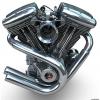Pharmacological NAD-boosting Strategies Improve Mitochondrial Homeostasis in Human Complex I-mutant Fibroblasts.
3-18-2015
http://molpharm.aspe...097204.full.pdf
Abstract
Mitochondrial disorders are devastating genetic diseases for which efficacious therapies are still an
unmet need. Recent studies report that increased availability of intracellular NAD obtained by
inhibition of the NAD-consuming enzyme poly (ADP-ribose) polymerase (PARP)-1 or
supplementation with the NAD-precursor nicotinamide riboside (NR) ameliorates energetic
derangement and symptoms in mouse models of mitochondrial disorders. Whether these
pharmacological approaches also improve bioenergetics of human cells harbouring mitochondrial
defects is unknown. It is also unclear whether the same signaling cascade is prompted by PARP-1
inhibitors and NR supplementation to improve mitochondrial homeostasis. Here, we show that
human fibroblasts mutant for NDUFS1 subunit of respiratory Complex I have similar ATP, NAD and
mitochondrial content compared to control cells, but show reduced mitochondrial membrane
potential. Interestingly, mutant cells also show increased transcript levels of mtDNA but not nDNA
respiratory complex subunits, suggesting activation of a compensatory response. At variance with
prior work in mice, however, NR supplementation but not PARP-1 inhibition increased intracellular
NAD content in NDUFS1 mutant human fibroblasts. Conversely, PARP-1 inhibitors but not NR
supplementation increased transcription of TFAM and mtDNA-encoded respiratory complexes
constitutively induced in mutant cells. Still, both NR and PARP-1 inhibitors restored mitochondrial
membrane potential and increased organelle content, as well as oxidative activity of NDUFS1-
deficient fibroblasts. Overall, data provide the first evidence that in human cells harbouring a
mitochondrial respiratory defect exposure to NR or PARP-1 inhibitors activate different signaling
pathways not invariantly prompted by NAD increases, but equally able to improve energetic
derangement.































 This topic is locked
This topic is locked

























